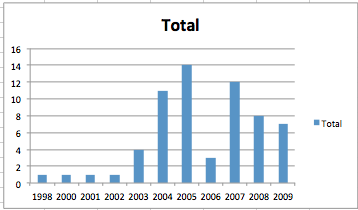PIP implants - are some more of a ticking timebomb than others?
New data suggests year of implantation may determine likelihood of rupture

The PIP breast implants scandal has affected thousands of women across the UK.
Diligent women who had done their research and chosen established cosmetic surgery clinics, only to discover that the implants they received were made from substandard silicone – and potentially harmful.
Aurora Clinics, though never having used PIPs on any of their patients, have replaced PIP implants for many of these women, having performed more than 230 replacements since the scandal broke.
The clinic has been keeping detailed records of every PIP patient they have treated. Surgeons have been logging the serial numbers of removed implants, along with the year of implantation and the degree of rupture observed.
Last month, the clinic reached a landmark – they treated their 50th patient with PIP implants that had completely ruptured.
This inspired the clinic to take a closer look at their statistics.

The graph above shows the breakdown of all 50 ruptures found to date, sorted by the year the patient received their implants.
Though it’s impossible to draw absolute conclusions from the data of just one clinic, the graph does highlight some interesting statistics.
- The years 1998–2002 appear to be comparatively safe
- The peak year for ruptures was 2005, with 14 of the 50 having received theirs that year
- There is a significant drop in 2006, almost back to the same number as in 1998-2002
- Rates then rise significantly again in 2007, before tailing off gradually until 2009
Aurora Clinics are only one of many clinics replacing PIPs, so it's possible that other clinics' findings may differ. However, if other clinics are finding similar patterns in their PIP rupture data, it may well be possible to establish a relationship between the year of implantation and the likelihood of rupture.
And though that may be a frightening prospect for women still living with PIPs - especially if they find out they received their implants in a 'danger year' - ultimately, more information can only be a good thing.
For the latest news and information about PIP implants, visit our PIP implants news page.
Kerry Greasley
Content Marketing Editor, Aurora Clinics
kerry.greasley@aurora-clinics.co.uk
Aurora Clinics are an expert group of Plastic Surgeons, medical aestheticians and anaesthetists specialising in a broad range of cosmetic and plastic surgery procedures (surgical and non-surgical). The Aurora emphasis is on honesty and openness, with information made publicly available via videos, podcasts, photo galleries, a highly comprehensive website and our past-patient network. We are always keen to work with the public and the Press to broaden awareness about cosmetic surgery, helping prospective patients make a fully informed choice. Visit www.aurora-clinics.co.uk for more information.
Tags:




